Product adoption can be incredibly challenging when your end-users aren’t your direct customers, a common problem in the B2B SaaS space. In a business environment, the customer who buys the product often isn’t the end user – the actual consumer of your product.
The customer could be the team lead or operations manager buying the product on behalf of the team, but this person of contact (POC) often isn’t the one in the weeds, using the product.
So, how can customer success managers (CSMs) have an impact on the real users of their product?
What is end-user adoption?
Getting your customers to adopt and use your product is a struggle in and of itself, let alone without the added barrier of being removed from them.
Even if you have a world-class onboarding sequence, it’s not worth a penny if it doesn’t resonate with the product’s day-to-day user. And with only 40% of companies having dedicated onboarding roles or teams, many B2B orgs are already starting at a disadvantage.
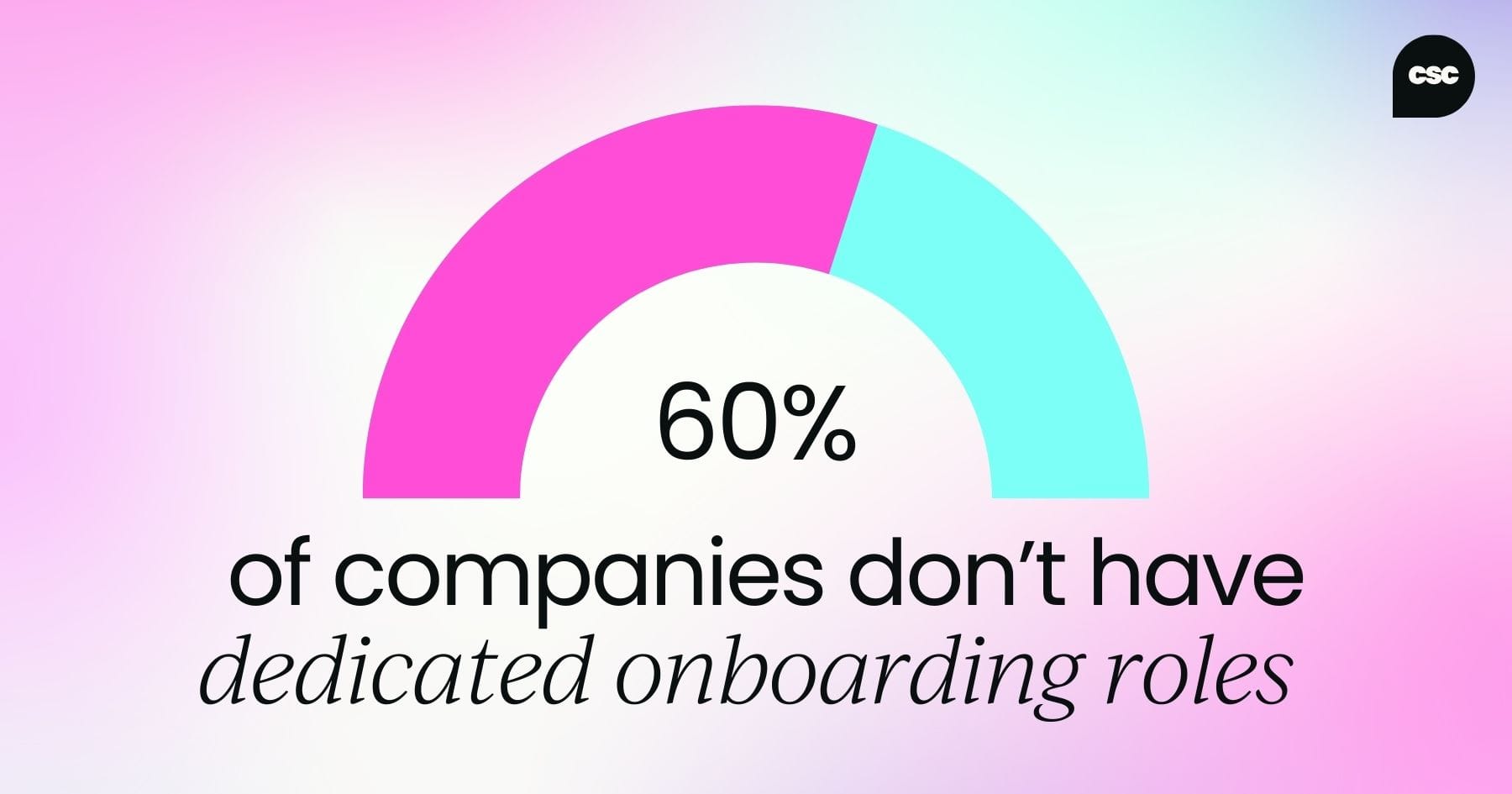
Let’s say you’re a SaaS provider offering a scheduling system to hospitals. Your buyer is an ops director, but the people actually using your product day-to-day are the front desk staff at dozens of different sites – people you’ll probably never meet.
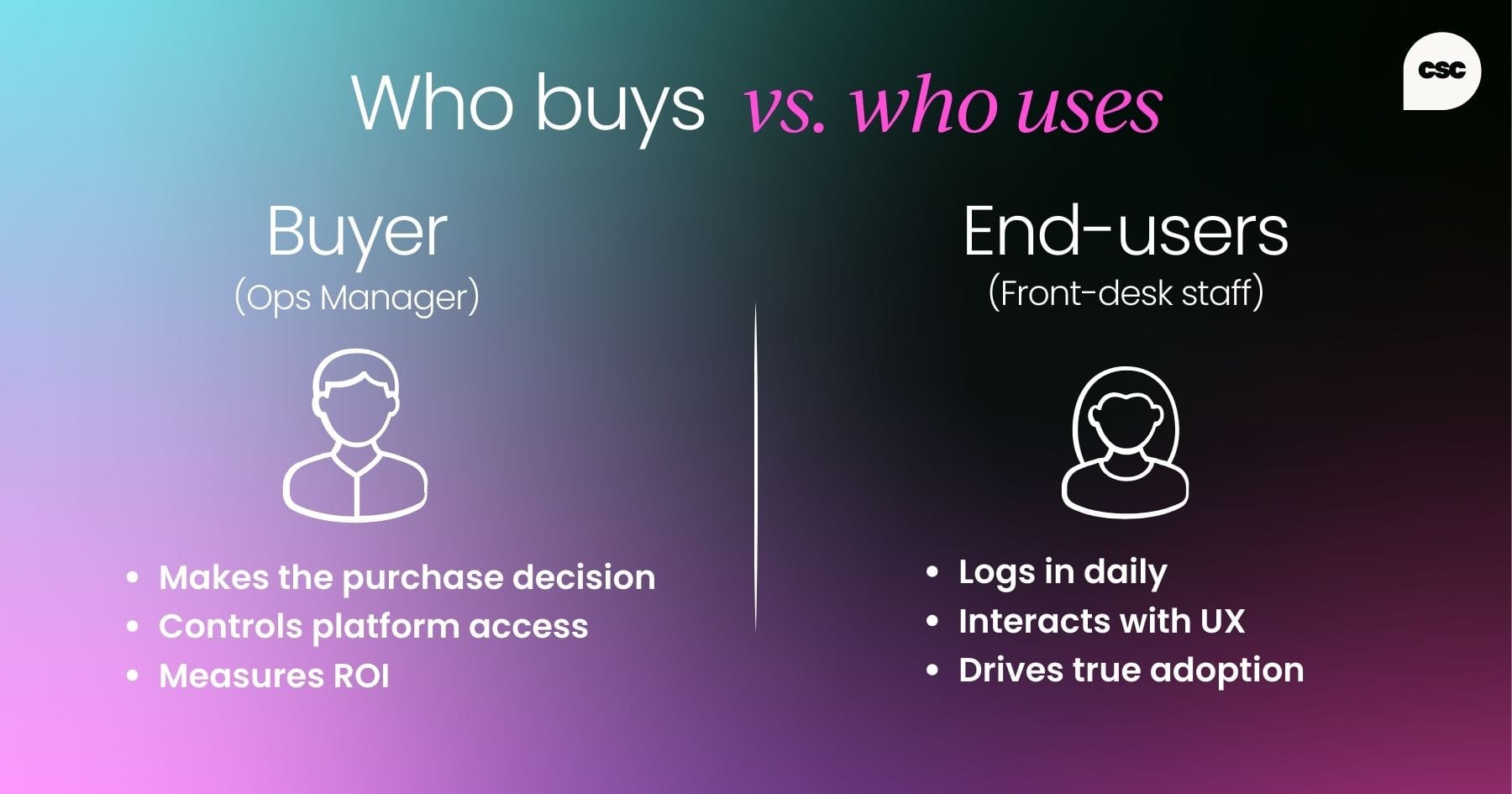
If they don’t understand the platform or find it frustrating to use, adoption stalls, tickets rise, and renewals get shaky.
So how do you help them succeed without direct access? That’s where smart onboarding, scalable training, and customer empowerment come in.
And that’s exactly what B2B onboarding and adoption is all about: access. You’ve got to provide the resources to meet their unique needs.
Why it matters
If your customers aren’t using your product, you’re on very shaky ground. This is because user engagement directly impacts retention and expansion.
In many B2B SaaS models, your product may be used by dozens or even hundreds of end-users within a customer’s organization, but unless their details are shared with you or synced to your systems, they might not appear in your CRM at all.
Create an end-user adoption toolkit?
If you find yourself unable to reach your end-users directly, that’s when you put your creative hat on. (Grab your strategic hat while you’re at it, too!)
Try not to focus too much on controlling every element; instead, you want to enable your POC (whether that’s the buyer, admin, or operations role) to deliver your product’s value on your behalf.
The best way to do this is through a combination of:
- Indirect strategies
- Scalable support
- Advocacy
Indirect strategies
Rather than trying to connect with hundreds of different users, you’ll have a much greater impact if you create enablement systems in place to better position your product, guiding behavior.
Ways to do this can be through easily sourced guides and in-app walkthroughs that don’t require one-to-one onboarding. Your saving grace here is an automated onboarding flow that is triggered by activity. Once you nail this, you’re truly on your way.
Scalable support
You want to be able to reach lots of people – and fast!
You want your slide decks, how-to videos and email scripts all good to go. Your internal champion (AKA your POC) will then be able to customize them to their team’s needs and distribute accordingly.
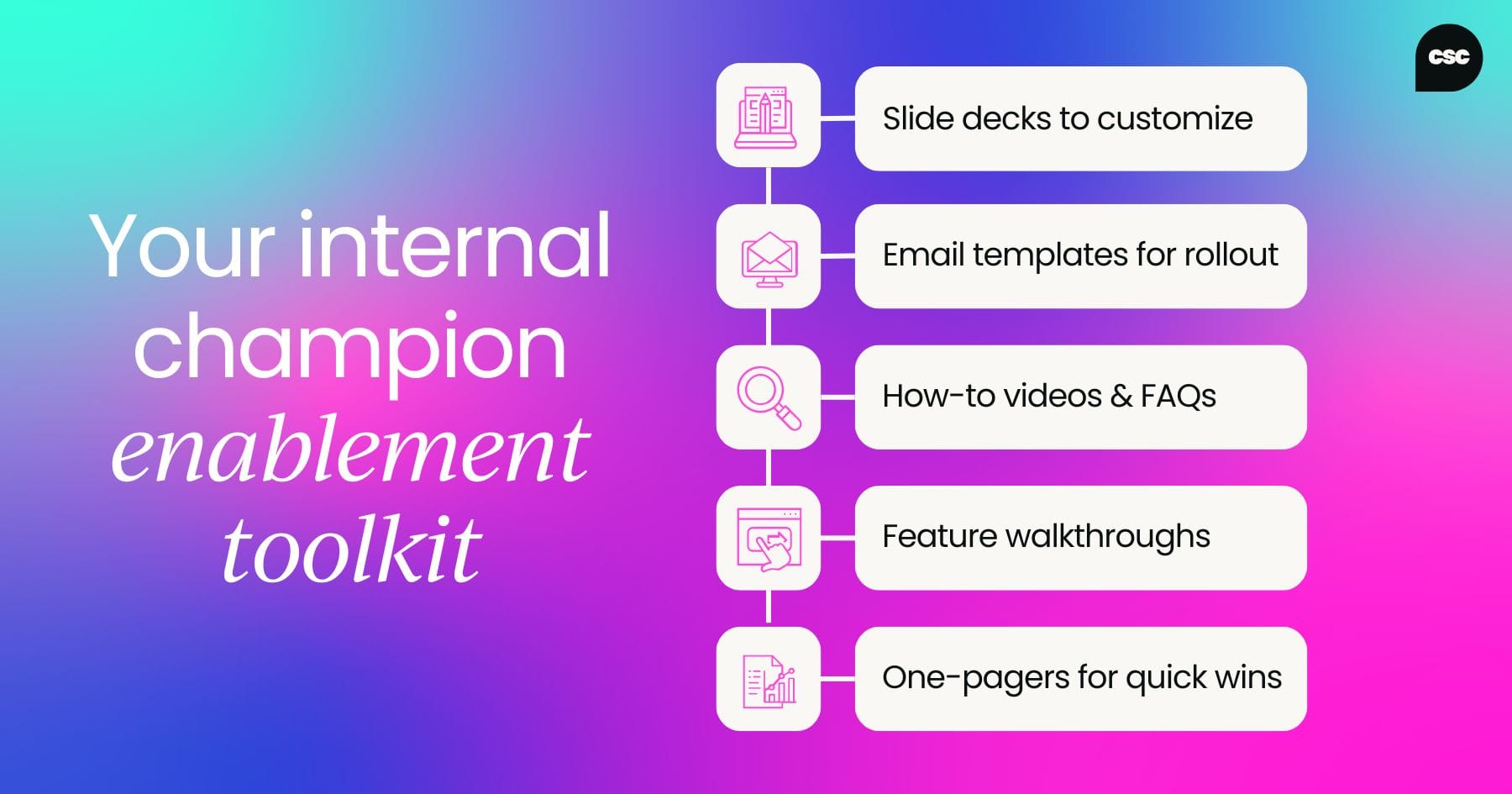
It’s all about filling your internal champions with confidence. Once they know your product inside out, they'll spread the gospel way better than you could. With CSMs being the primary stakeholder in onboarding for 82.8% of companies, empowering them with slide decks, email templates, and training resources becomes crucial to scale impact
Advocacy
There’s something seriously underrated about advocacy planning. When you give your customers the right tools, they'll become your secret weapon inside their company. When your POC starts advocating for your product, the foundations for renewals and expansion are well in place.
They'll do the heavy lifting, like getting new people up to speed. They’ll gather what users really think, and spread the word when you drop cool new features.
Because at this stage, they're not just buying your stuff anymore – they're right there with you, making sure everyone actually uses it.
Set expectations on data access
When you’re removed from the end-user, data becomes your best friend. But only if you can see it.
One of the trickiest parts of supporting adoption in a B2B model is getting access to the right data, because your customer (not you) controls who gets into the platform and what information is shared.
While 65.6% of CS teams track usage data, few go the extra step – only 11.5% conduct exit interviews. Real insight comes from combining data with qualitative feedback.
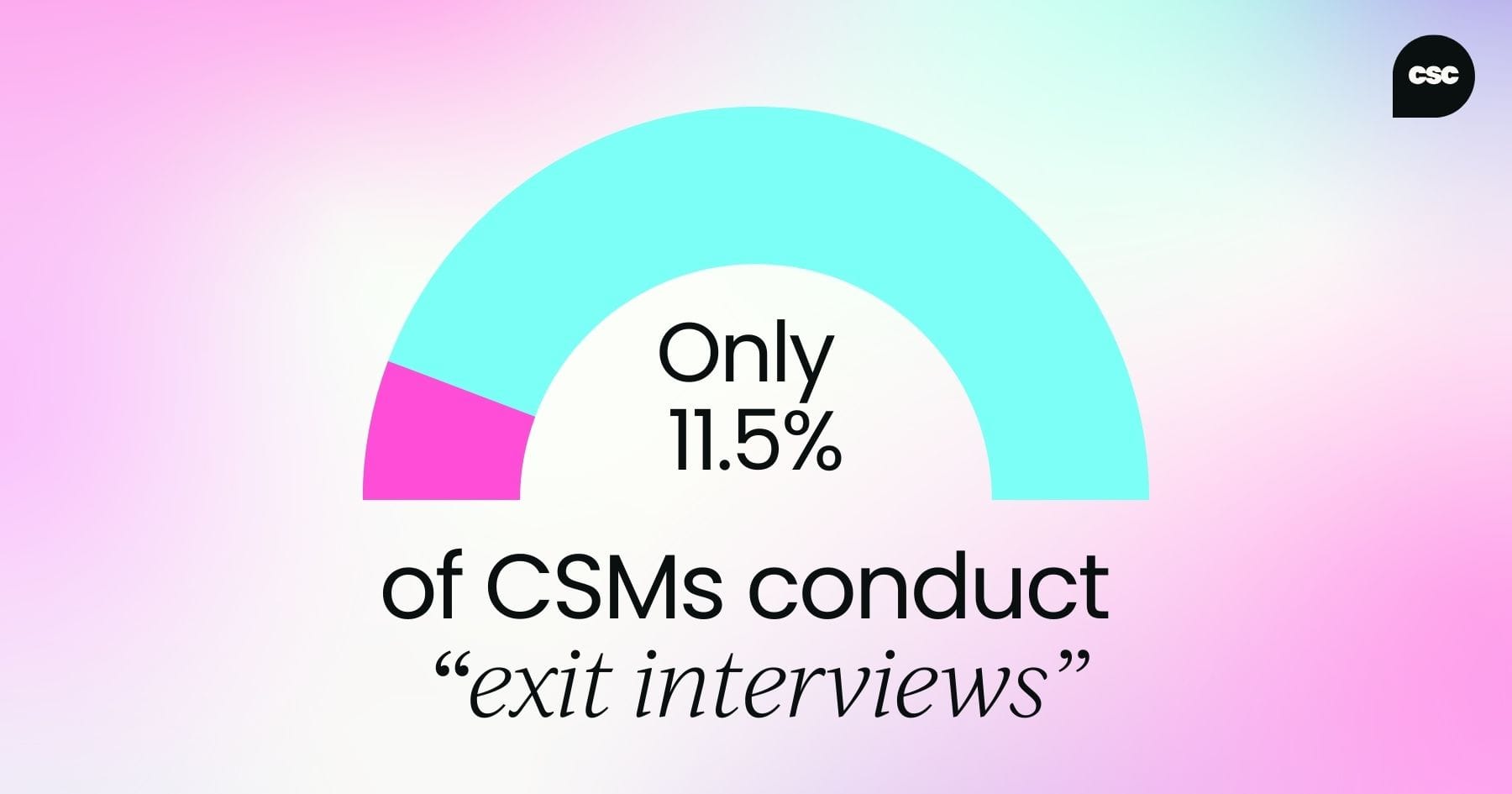
So how do you make this work?
You get. In. Early.
Clarify with external stakeholders
If you want better data access to be clear upfront during your onboarding and contract discussions. Be unequivocal that in order to support their success, you’ll need at least basic insights into user engagement. You want to know who’s logging in, who isn’t, and how key workflows are performing.
Frame it as value, not oversight
Customers are more open to sharing data when they understand the “why.” Position it like this:
“This data helps us tailor your success plan, spot adoption blockers early, and keep your teams getting maximum ROI.”
Bonus tip? Build dashboards or reports that they can access too, so it doesn’t feel like you’re asking for something for you, but rather something that benefits them.
Help your customers gather feedback
When you can’t talk directly to the end-users, your customers become your user research team. But they’re busy – so make it easy for them.
Give your champions ready-to-go surveys they can send out (bonus points if you help them interpret the results). You can also provide a select few targeted 1:1 chats with users that can reveal more than a dozen survey responses. Give your customer a simple interview guide and offer to join or help analyze.
In the State of Customer Onboarding, we found that only 15.6% of companies proactively gather direct feedback during onboarding, quite a worrying figure. You can equip your brand champions to help provide feedback, which can reveal friction points early on.

Don’t underestimate the human element
Even with the best onboarding tech stack in place, adoption lives and dies by one simple factor: whether people want to use your product.
This is where empathy comes in. Try to understand the world of your end-users. What does a “busy day” look like for them? What frustrates them? What would make their job easier, faster, or more enjoyable? These aren’t just UX questions – they’re adoption questions. With onboarding and retention ranking among the top CS responsibilities, it’s vital we design processes that feel human, not just efficient.
You don’t need to be in the room with them to design for them. Tap into your POC’s knowledge, use surveys and support tickets as signals, and lean into user behavior data. When you start seeing your users as real people rather than abstract data points, your onboarding and adoption efforts will naturally become more intuitive and effective.
Iterate like a product manager
Adoption isn't a one-and-done event – it’s an ongoing loop. Think of it like product development: you test, you learn, you refine. Yet only 34.4% of companies factor in customer experience during onboarding. That’s a huge opportunity for those willing to test and adapt.
Watch what works and double down. See what flops and pivot fast. Maybe one guide gets way more traction than others – cool, lean into that format. Maybe your fancy webinar series gets zero views? Okay, time to try something else.
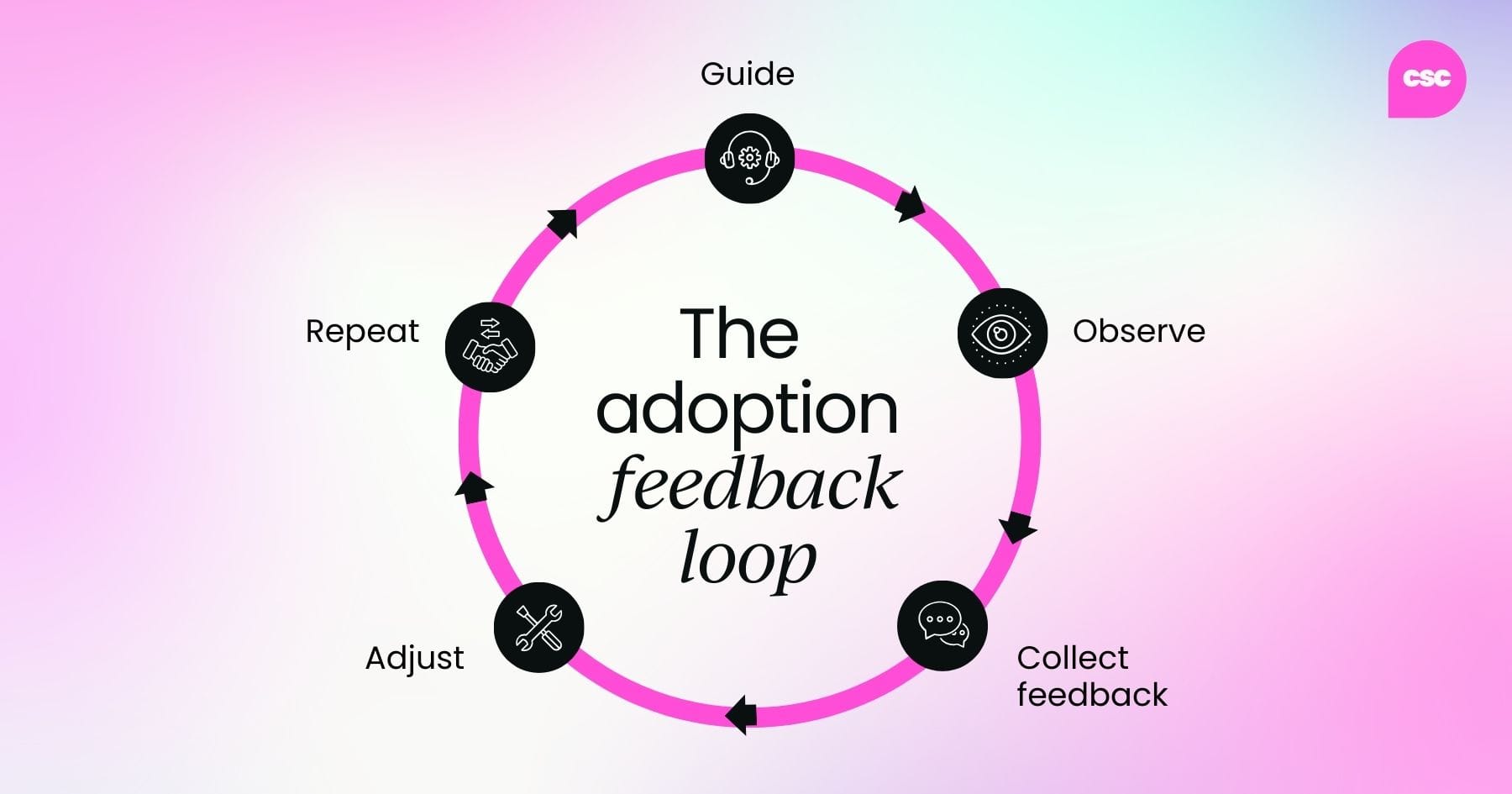
The best CSMs approach adoption with a product mindset. Constant iteration, feedback loops, and never getting too precious about any one tactic.
So, what have we learned?
End-user adoption in B2B SaaS isn’t just about ticking onboarding boxes, it’s about enabling real behavior change, without ever shaking hands with the people using your product.
Yes, it’s a challenge. But it’s also a huge opportunity. When you build scalable systems, empower your champions, and stay relentlessly curious about what’s working, you turn one-time customers into long-term advocates.
Because when your product gets loved from the bottom up, that’s when retention sticks, expansion happens, and customer success stops being a department and becomes a growth engine.



 Follow us on LinkedIn
Follow us on LinkedIn



